Over 80% of global businesses relied on Google Ads for pay-per-click (PPC) campaigns as of 2020, according to WebFX. In addition, 97% of Google’s revenue comes from Google ads, according to Corporate Eye.
Google Ads, Google’s online advertising platform, offers an effective way to boost qualified traffic or acquire customers for your business. Google Ads helps you target customers while they’re searching for products or services like the ones you offer.
Google Ads enables you to create ad groups for better targeting. What’s one benefit of creating multiple ad groups? You can better target long-tailed keywords. Let’s read the article to discover more benefits.
What Are Google Ad Groups?
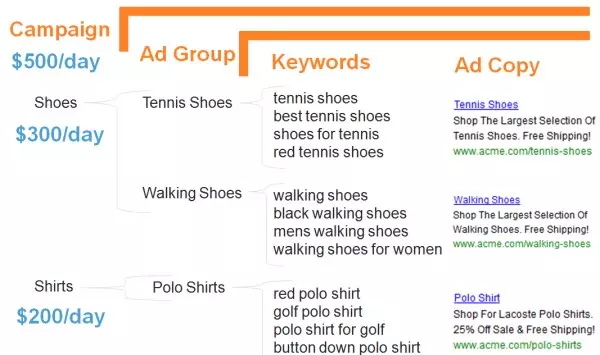
Google receives more than five billion search queries a day. The results of these queries are generated based on relevant keywords. Some of these results may also be advertisements that target specific search phrases. Through Google Ads, marketers can target specific keywords and phrases that are relevant to the product or service they are advertising.
This paid online advertising platform lets you place ads on the results pages of search engines like Google Search and non-search websites, mobile apps, and videos. The platform allows advertisers to bid to display brief ads, service offerings, product listings, or videos to web users.
So, with Google ads, you can advertise and promote your product or service when people search for relevant keywords. Successful implementation can help you drive website traffic, boost in-store visits, and increase sales.
Based on HubSpot’s State of Marketing report, as of 2020, ad placement and audience targeting represented the top ways advertisers grew more demand.
Google Ads fall under a marketing channel called “pay per click” (PPC) or “cost per click” (CPC), where the advertiser pays per click on an ad. Though not relevant to Google Ads, cost per impression (CPI) represents the rate advertisers agree to pay per 1,000 views of a particular ad. Google Ads and Facebook ads represent the most widely used PPC advertising systems.
In your Google ads account, you can create one or more ad campaigns running at a time. Each campaign can include several similar ads. These ads are referred to as ad groups as they include related keywords or products. As a result, these groups simplify your ad tracking process. You can review your traffic, set prices, and check cost-per-click bids for multiple ads in one place.
Specifically, a Google ads account can be made up of 10,000 campaigns, including active and paused campaigns. In addition, each campaign can contain 20,000 ad groups, and each ad group can have 50 text ads. Text ads feature text and links that you use to promote your brand, message, and product or service.
For example, if you’re selling shoes and shirts, your campaigns and ad groups will look like this:
When targeting customers, it would be best to use ad tracking software. It’ll help you better understand customer behavior and their interests so that you can develop more successful campaigns and fine-tune them.
How Do Google Ad Groups Work?
To start, you need to have a Google Ads account. On the account, you’ll see campaigns. You should have at least one campaign in your account, but the number can be more than one. Each campaign can contain several ad groups, but each campaign should have at least one ad group. In addition, each ad group should have one keyword and one ad.
And what about creating multiple ad groups? In this case, each group can contain several keywords and some variations of that keyword. For example, a camera store owner can have a campaign for “Nikon DSLR” and separate ad groups for each product, such as “Nikon D5” and “Nikon D500.” As a result, it’ll be possible to create ads for highly specific queries, such as “Nikon D5 camera.”
Here, it’s also essential to talk about singlet theme ad groups or STAGs. They contain keywords grouped based on a specific theme. For example, after you’ve conducted keyword research, make a list of keywords that best describe your product, service, or brand. Next, make the list as specific as possible. For instance, let’s take themes such as:
- “men’s t-shirts”
- “women’s t-shirts”
- “children’s t-shirts”
- “unisex t-shirts”
Then, think about the most suitable keywords for those groups. Consider adding different color variants. Create an ad copy for each variation, such as:
- “Getting ready for summer? Check out our purple children’s t-shirts.”
- “Getting ready for summer? Check out our blue children’s t-shirts.”
- “Getting ready for summer? Check out our green children’s t-shirts.”
The Difference Between a Group and a Campaign
Let’s compare ad groups and campaigns before answering the question, “What’s one benefit of creating multiple ad groups?”
Ad groups allow you to organize and target your ads. As mentioned above, an ad group can include several ads with related keywords or themes.
The most significant difference between an ad group and an ad campaign is that an ad group comes after a campaign in the account hierarchy. Campaigns directly control the goal and budget. An ad group controls the bids/CPC, audience/targeting, placement, and the options you may choose to capture the audience.
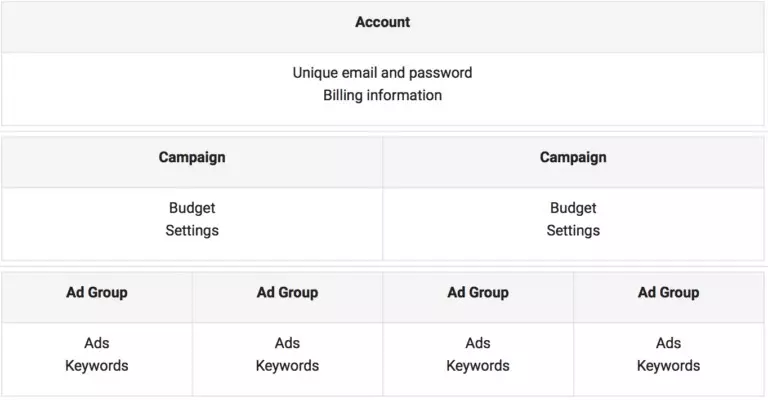
The Benefits of Multiple Ad Groups
Now let us have a look at each advantage of multiple ad groups. There are a few benefits such as the stronger connection between keywords and ads, better use of keywords, and performance monitoring let’s discuss each one individually.
Better Use of Long-Tailed Keywords
Long-tail keywords get less search traffic but usually offer a higher conversion value, as they are more specific. For example, “digital marketing” can be the main keyword, and “how digital marketing works” can be a long-tail keyword.
The more specific your keywords are, the more likely you are to get users to click. As a result, long-tail ad groups can help you improve conversion. Consider adding long-tailed keywords to one ad group and another keyword for a different ad group. As a result, you can better manage which specific long-tail keywords improve traffic.
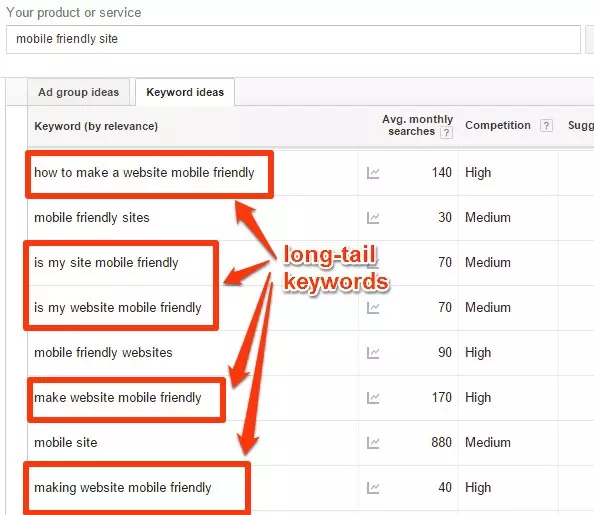
Optimized Landing Pages
Optimized ads with a correlating landing page can bring you more high-intent clicks because it offers relevant information to the user conducting the search. When your landing page is optimized with target keywords, Google may give it a higher quality score, which can make your ad rank higher without having to bid more.
For example, if your keyword is “discount shoes” and your ad is for 20% off shoes, you should offer your customers that discounted price on your landing page. Or, if your ad encourages customers to sign up for a free trial, your landing page should feature a sign-up link.
Ideal for Performance Monitoring
You can create new ad groups if you want to target new keywords. You can easily monitor the performance of new keywords without mixing them with the existing keywords. As a result, you can determine whether the new phrases produce successful conversions and higher traffic.
Separate Default Bids
The conversion rate of different keywords varies. This means you’ll need to bid differently. Otherwise, you won’t be able to maximize the revenue from each of them. Importantly, you can easily set the default bid on each ad group. More specifically, you can change the bids for closely related keywords.
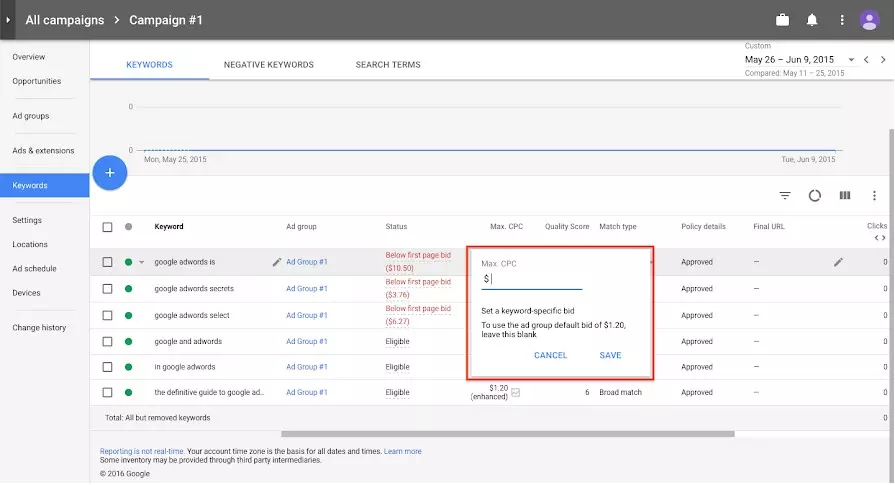
Stronger Connection Between Keywords and Ads
When your ad matches the searcher’s intent, you can generate enough high-intent clicks to justify your ad spend. So, make sure your headline and ad copy match the keywords you’re bidding on. Tailor ads to the respective keyword to boost the relevance of your ads for Google and your users. As a result, you can enjoy a higher click-through rate (CTR) while hopefully seeing an increase in conversions.
CTR shows the number of clicks your ad receives as a proportion of the number of views. The higher the CTR, the better your ad matches search intent and targets relevant keywords.
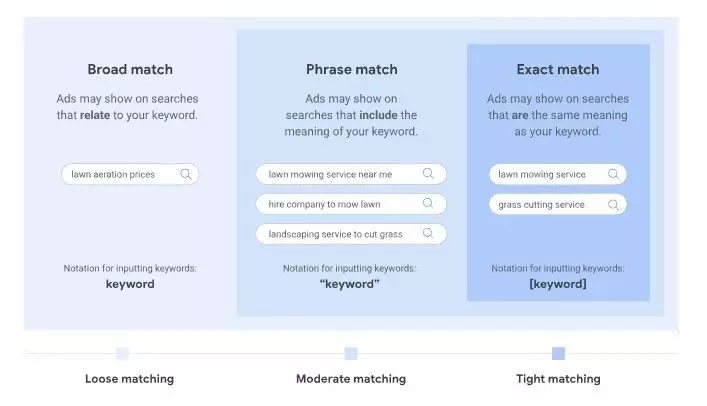
Final Thoughts
Google Ads is an online advertising platform allowing you to create campaigns. You should have at least one ad group in your campaign. Your ad group can include more than one ad based on a unique theme. The services of this platform fall under a pay-per-click (PPC) pricing model.
What’s one benefit of creating multiple ad groups? Well, it provides several advantages, such as excellent monitoring of keyword performance and higher click-through rates.
Table of Contents
- What Are Google Ad Groups?
- How Do Google Ad Groups Work?
- The Difference Between a Group and a Campaign
- The Benefits of Multiple Ad Groups
- Better Use of Long-Tailed Keywords
- Optimized Landing Pages
- Ideal for Performance Monitoring
- Separate Default Bids
- Stronger Connection Between Keywords and Ads
- Final Thoughts
Have a Question? Ask an Expert!
Fill out the form below to get in touch with one of our marketing specialists.
